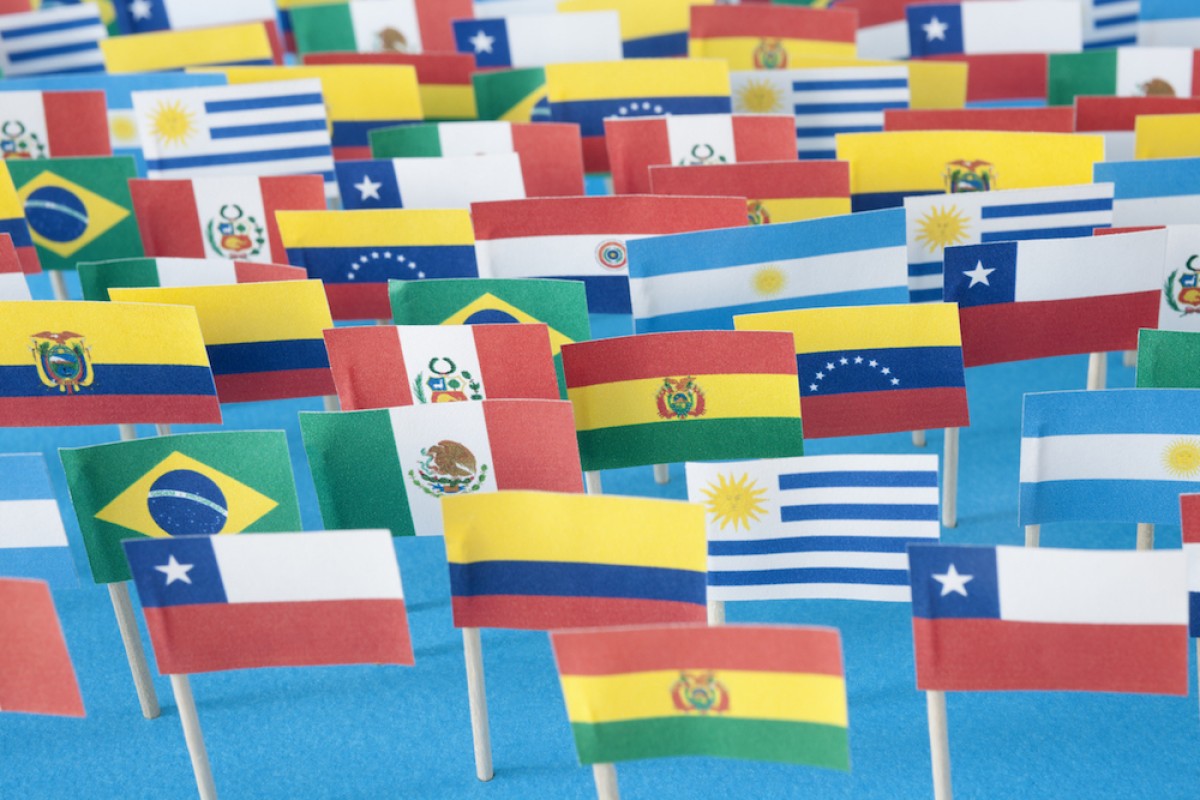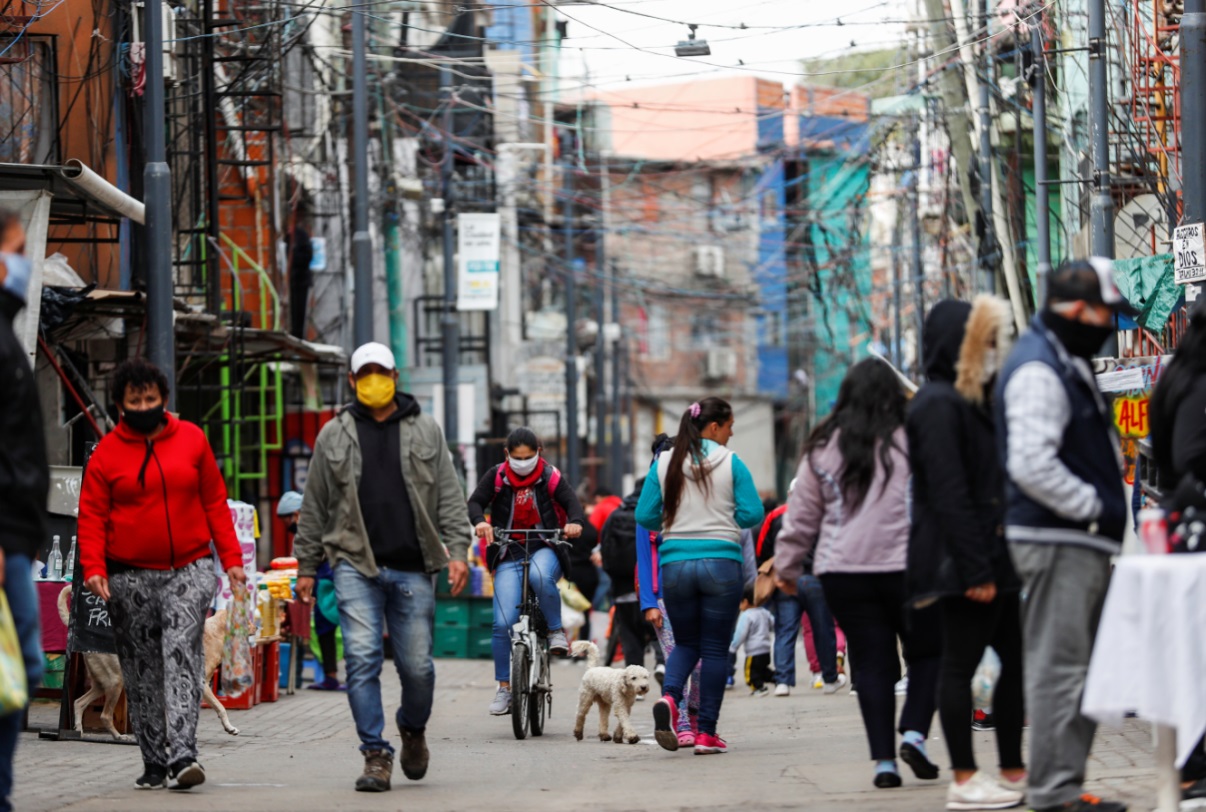RIO DE JANEIRO, BRAZIL – All economic reports published by international organizations echo the alert: Latin America will be the hardest hit region by the coronavirus pandemic. For the Economic Commission of Latin America and the Caribbean (ECLAC), this is the greatest economic crisis in a century in this part of the world.
Although it is beginning to detect unexpected positive indications, the World Bank estimated in a recently published report that the region’s Gross Domestic Product (GDP) will drop by 7.9 percent in 2020, an unparalleled collapse in recent history.

But Abhijit Surya, a Latin American analyst with the Economist Group’s economic intelligence division, cautions: “There are countries that will rebound very quickly, like Chile or Uruguay, and others with many problems that they will most likely be unable to overcome before 2023 or 2024.
In fact, determining when a country has rebounded from a crisis is not easy, and economists have different views on which indicators to observe.
One of the most widely used is GDP, the total value of goods and services produced in a country over a given period. Despite the doubts the virus raises regarding economic behavior, for which an effective vaccine is not yet available, the GDP of most Latin American countries should grow again in 2021. But regional GDP will not return to pre-pandemic levels before at least 2023.
In some countries, this arduous journey to recover lost wealth may be even longer. Surya says that “the countries that manage to sustain economic stimuli the longest will do better in the rebound.”
As elsewhere, when the coronavirus reached countries in the region, governments began to adopt measures to assist the economy – direct aid to families launched in Brazil by President Jair Bolsonaro, and debt-support programs adopted by the central banks of Chile and Colombia.
The goal was to bolster growth and activity at a time when the virus was ruthlessly depressing them. But the persistence of the pandemic will force countries to sustain these extra efforts and no one knows for how long.
In the words of Martín Rama, the World Bank’s chief economist for the region: “When the pandemic began, the stimuli were applied as if it were a short distance race. Now we see it will be another marathon.”
Which countries are better equipped with the features needed for a long-distance run?
To answer this question, in addition to Surya, two other economists dedicated to analyzing Latin American countries were heard by BBC: Alberto Ramos of Goldman Sachs Bank, and William Jackson, an analyst with the British consulting firm Capital Economics.
The experts clearly pointed out that one of the predominant factors is a country’s degree of indebtedness: the higher the debt, the less room it has to continue assisting its companies and citizens and thus promote economic recovery.
Criteria such as the drop in GDP in 2020, projections for GDP recovery to pre-pandemic levels, and the proportional relationship between the public deficit (the relationship between tax revenue and government spending) and GDP were also taken into consideration.
Based on the three experts’ assessment, along with these indicators, the report identified the Latin American countries with the worst economic prognosis in the pandemic, listed below in alphabetical order.
Argentina
With one of the longest and most rigid quarantines in the region, Argentina is one of the economies that has suffered the most; the World Bank projects that the country will close 2020 with a 12.3 percent loss in GDP and almost twice as many poor as at the start of the year.
President Alberto Fernández’s government has implemented stimulus measures amounting to 3.5 percent of GDP, but Argentina, burdened by solvency problems for decades, is unable to sustain this effort indefinitely. Surya points out that “at some point, they will have to remove the stimulus because it is fiscally unsustainable”.
Fernández had a break at the start of the year when he agreed a restructuring of over US$66 billion in overdue debts with foreign creditors. William Jackson of Capital Economics says that “the government acted quickly to restructure the debt, but in fact, it postponed a problem that will arise again in the middle of the decade.”
Alberto Ramos of Goldman Sachs is not optimistic either. “Argentina is experiencing great difficulty and uncertainty, despite the restructuring, because it has a large fiscal deficit that is being monetized, and this is creating much exchange pressure.”
This dynamic threatens to exacerbate the inflationary spiral in which the Argentine economy has been stuck for years, increasing prices and hindering growth. In addition to all this, exchange and price controls are also hindering economic activity and discouraging potential investors, according to the analysts.
The World Bank believes that Argentina’s GDP will not be restored to its pre-pandemic level before 2023.
Ecuador
Ecuador has also recently agreed to a restructuring of its foreign debt, which currently reaches 68.9 percent of GDP and remains a major obstacle to achieving the fiscal effort that the current situation requires.
With a fiscal deficit that has soared by 8.9 percent this year, Ecuador faces the difficult challenge of increasing its tax revenue without further stifling its already shaken economy. “We can see a return to austerity while the economy is still suffering,” says Jackson.
World Bank analysts point out that Ecuador’s economy needs “structural reforms,” but when President Lenín Moreno tried to raise fuel taxes in October 2019 to increase state revenues, he faced massive protests that forced him to retreat. Ramos warns that “the political tension persists in the country and may affect growth”.
Ecuador is another country projected to fail in recovering to its 2019 GDP level before 2023.

Mexico
Rebound will most likely be slower in Mexico too. But unlike Argentina or Ecuador, its burden will not be debt.
President Andrés Manuel López Obrador came to power promising to clean up public accounts and reduce the public deficit, and the pandemic does not seem to have diverted him from his goal. “Under normal circumstances, that’s fine, but now more public spending is required,” says Surya.
The Mexican government has been one of the most reluctant to implement measures to support the economy, which probably partly explains why Mexico’s GDP will drop by about ten percent in 2020.
The decline in tourism, which is critical for the country, has also affected the economy, and experts agree that this will be one of the last sectors to bounce back. The drop in oil prices is not helping Mexico either, which, paradoxically, may also be facing its great opportunity.
Transportation problems and the potential risk of customs restrictions have led to “a global trend to bring supply chains closer to markets, and Mexico is very close to a major market – the United States,” says Surya.
But, according to Ramos of Goldman Sachs, the López Obrador government “has failed to create the most favorable environment for business.”
Venezuela
With no official figures for years, the World Bank has not included Venezuela in its assessment, but according to Jackson of Capital Economics, in a context of low oil prices, “things will only get worse in a country that was already tragic before the pandemic.”
The Economist Group’s economic intelligence unit “believes that the country will lose about 30 percent of its GDP this year, which will total a decline of about 70 percent of its GDP as a result of what has been lost since Nicolás Maduro came to power. In its latest report, the International Monetary Fund (IMF) projects a 25 percent downturn.
The Venezuelan government blames US sanctions for its economic problems, while most observers blame poor government economic policy and serious structural problems in the Venezuelan economy. No report projects when Venezuela’s GDP will cease to plummet and when it will recover its 2019 level.
According to the United Nations (UN), one-third of Venezuelans do not get enough food and millions of citizens have fled the country in recent years.
What about Brazil?
The analysts heard by the report were not very optimistic about Brazil’s prospects, but they place the country at lower risk than its peers in the region.
The fact that Brazil has the second-largest public debt in Latin America – 91.5 percent of GDP according to the IMF – and also a large fiscal deficit – which should reach R$861 billion, or 12 percent of GDP, according to the most recent estimate by the Ministry of the Economy – play against the country.
In parallel, however, Brazil has one of the lowest projected GDP declines in 2020 in Latin America. In its latest report, the World Bank projected a 5.4 percent contraction, below the 8 percent projected in June. “Brazil will be one of the (Latin) economies with the best performance this year,” says Surya of the Economist Group.
In Surya’s opinion, the fact that Brazil did not implement in the country a national lockdown, as in other countries, in addition to releasing credit lines for companies and emergency aid for individuals, has mitigated the economic impact of the pandemic.
Surya also stresses that Brazil “has one of the best health systems in Latin America.” However, he says that the outlook for the country is unclear.
“The issue is fiscal sustainability. Bolsonaro promised an adjustment in public accounts, but what happened during the pandemic was that massive spending policies had to be implemented. The question is whether this will be controlled.”
Ramos, of Goldman Sachs, says that the country will be unable to sustain policies to stimulate the economy for much longer. “Brazil has made very little progress in the required fiscal reforms. The deficit has increased because of stimulus to the economy, which will result in closing the year at a rate close to 17 percent of GDP and a debt close to 100 percent of GDP. This does not allow for great prospects of an improvement in 2021 or 2022,” Ramos says.
Moreover, “there is much political and institutional fuss about it, which does not help either,” because the country needs to contain the increase in public debt. “This requires spending cuts and political capital to implement the required measures.”
Unexpected Positive Data
Despite the bleak outlook, the latest World Bank report pointed to some unexpected positive aspects for Latin America.
World trade is returning to pre-pandemic levels, which favors countries in the region that depend on the export of raw materials, the prices of which have been maintained in international markets, perhaps favored by the strong rebound in Chinese demand.
The volume of remittances has also been maintained. Despite an initial sharp decline, Latino immigrants in developed countries continued to send money home, which helped many sustain their families in their home countries.
The stimulus measures implemented by governments and central banks were also more “robust” than expected.
Source: BBC

